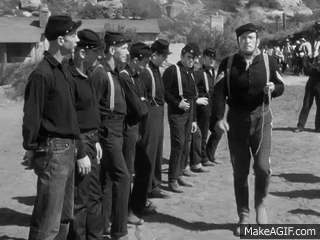 |
| Hillbilly Gothic: The Devil All the Time |
A gothic, hillbilly stew with a never ending trail of corpses, Antonio Campos' The Devil All the Time is more trash than art, but still is effective cinema. Campos' adaptation of Donald Ray Pollock's novel is respectful towards its source to the point where Pollack himself is enlisted as the film's narrator. This helps to hold together the many characters and plot strands. The theme of The Devil All the Time, the impact of violence on generations of Appalachians, is monotonous and its handling of religion is puerile, but Campos conveys a feel for the region and is expert at handling his players.
Indeed, The Devil All the Time boasts the best ensemble work of any American movie released in 2020; faint praise since this was the weakest year for American films released since 1943. Many talented performers contribute: Haley Bennett, Kristin Griffith, Riley Keough, Jason Clarke, Pokey LaFarge, David Atkinson, Mark Jeffrey Miller and Mia Wasikowska all offer memorable moments. Harry Melling continues to emerge from the shadow of Dudley Dursley with another impressive turn as a psychotic preacher. Eliza Scanlen is also building an impressive resume for a young thespian, but she has died in every film I've seen her in: Babyteeth, Little Women and now this one.
Only Bill Skarsgard fell a little short for me. He captures the haunted aspect of the protagonist's father, but cannot evoke his character's monomania; something that, say, Michael Shannon can do reflexively. Shannon, at times, seems like a one note actor, but he can hit that one note as if it were an anvil. Robert Pattinson has been criticized for his theatrics in assaying the role of a vain and lecherous preacher. I thought he gave the film, which threatens to succumb to its morbid pathology, some needed juice. A role like this one verges on parody anyway, what with America's rich history of fallen ministers, both real (Henry Ward Beecher, Jimmy Swaggart, Jim Bakker) and fictional (Arthur Dimmesdale, Elmer Gantry, Gail Hightower). Thus, Pattinson's choice to go a little over the top seems apt to me. Conversely, as the film's beleaguered protagonist, Tom Holland underplays nicely, helping to hold together a narrative that is overextended and bonkers.
 |
| Robert Pattinson going a little over the top |
I described this film as trash earlier, but I do not mean this term to be pejorative. With the emergence and, now, ascendancy of popular culture during the last few hundred years, the lines between high and low art have become blurred. A good example is Beckett's Waiting for Godot, which successfully blends existentialism and vaudeville. As a fan of rock and roll, I became a connoisseur of trash early on. I would happen upon true trash masterpieces (The Rolling Stones' Some Girls or the songs of the New York Dolls, one of which is called, fittingly, "Trash"), but, more often would encounter utter garbage: Black Oak Arkansas, Creed, Grand Funk Railroad and others too numerous to list. Even the work of a great artist like Faulkner ranges from the sublime (Light in August) to the ridiculously trashy (Sanctuary). Much as I love me some Miriam Hopkins, I must note that the film version of Sanctuary, The Story of Temple Drake, ranks as bad trash, as does Martin Ritt's film of The Sound and the Fury.
Since I grew up in Baltimore, John Waters is my Pope of Trash, but there are many other fine examples. I would nominate John McNaughton's Wild Things as a Trash Masterpiece. The Devil All the Time lacks the Eros of Wild Things, but has its Thanatos in spades. Campos' dry, chilly tone matches the mordant narrative of Pollack whose characters all expire gruesomely. Because I am a bit of a lowbrow and a Dionysian, I prefer this film to another good American film of recent vintage, Kelly Reichardt's First Cow. First Cow has more structure and uplift than The Devil All the Time, but it is too neat and tidy; especially with death. It is a fine film, but fine can be a limiting adjective.
The Devil All the Time is a jumbled film, but an unsettling one. It speaks to the ambivalence of existence, a feeling heightened by the pandemic. As John Berryman noted, "Life, friends is boring..." However, it is also cosmically chaotic. This duality, of a sense of one's individual solitude and insignificance contrasted with the clusterfuck of life in 21st century America has also been magnified by Donald Trump, a true lord of misrule and chaos. Viewing The Devil All the Time made me respond to its primal fear of death and disorder, if nothing else.
























